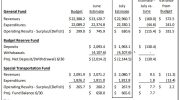
Hartford, CT – The Department of Public Health (DPH) today released comprehensive guidance and recommendations for organized sports, including youth and adult club and private league play. DPH had previously released guidance to scholastic athletic leagues in Connecticut concerning fall sports. The guidance is intended to guide local health departments, municipalities and league organizers in assessing the risk of play, and will be re-visited later in the Fall or early Winter as the COVID-19 pandemic progresses. This guidance is based on a risk assessment for COVID-19 conducted by the National Federation of High School Associations, a national organization governing high school athletics. The guidance includes a description of the risk categories for sports, breaks down the risks of different activity associated with those sports, and makes recommendations for each of those activities.
“The COVID-19 pandemic does not mean all organized sports should stop. In fact, DPH recognizes the importance of physical activity for the health and well-being of everyone during this stressful period,” said Acting DPH Commissioner Deidre S. Gifford, MD MPH. “We encourage children and adults to engage in lower-risk physical activities as part of a strategy to stay healthy and cope with this pandemic. Unfortunately, some team sports present a higher risk of transmitting COVID-19 during practice or play, and we recommend that those be either modified or postponed. We want anyone playing organized sports in Connecticut to be aware of the risks for contracting COVID-19, so everyone can make informed decisions. Our overall goal is for people to have fun and compete, keep physically active and fit, and most importantly stay safe and healthy during this pandemic.”
Below are the risk categorizations for sports and associated activities:
Table 1: Risk Categorizations with Associated Sports, National Federation of State High School Associations, Sports Medicine Advisory Committee, May 2020
| HIGHER RISK
Sports that involve close, sustained contact between participants, lack of significant protective barriers, and high probability that respiratory particles will be transmitted between participants. |
|||
| Wrestling | 11-on-11 Football | Boys Lacrosse | Competitive Cheer
Dance |
| MODERATE RISK
Sports that involve close, sustained contact, but with protective equipment in place that may reduce the likelihood of respiratory particle transmission between participants OR intermittent close contact OR group sports OR sports that use equipment that can’t be cleaned between participants.
|
|||
| Basketball
Volleyball* Baseball* Softball* |
Soccer
Water polo Gymnastics* Ice hockey Field hockey |
Tennis*
Swimming relays* Pole vault* High jump* Long jump* |
Girls lacrosse
Rowing/Crew (with two or more rowers in shell) 7-on-7 football |
| *Could potentially be considered “Lower Risk” with appropriate cleaning of equipment, use of masks by participants, moving activities outdoors, and/or other appropriate mitigation strategies | |||
| LOWER RISK
Sports that can be done with social distancing or individually with no sharing of equipment or the ability to clean the equipment between use by competitors. |
|||
| Individual running events
Throwing events (javelin, shot put, discus) |
Running (staggered starts)
Individual swimming Golf |
Weightlifting
Alpine skiing/ snowboarding Sideline cheer |
Rowing/Crew (single sculling)
Cross country |
Table 2: Recommendations for the Operation of Interscholastic, Club, and Recreational and Other Amateur Sports Activities
| CT State Current Sports Risk Categories (from Table 1) | ||||||
| Activities | Lower Risk Sports | Moderate Risk Sports | Higher Risk Sports | |||
| Indoor* | Outdoor | Indoor* | Outdoor | Indoor* | Outdoor | |
| Tier 1
Small group conditioning and non-contact drills |
Recommend allowing | Recommend allowing | Recommend allowing | Recommend allowing | Recommend allowing | Recommend allowing |
| Tier 2
Team practices, intra-squad scrimmage |
Recommend allowing | Recommend allowing | Recommend allowing if appropriate modifications are feasible | Recommend allowing | Not recommended | Not recommended |
| Tier 3
In-state contests meets and tournaments |
Recommend allowing | Recommend allowing | Recommend allowing if appropriate modifications are feasible | Recommend allowing | Not recommended | Not recommended |
| Tier 4
Out-of-state competitions with states on the CT Travel Advisory List |
Not recommended | Not recommended | Not recommended | Not recommended | Not recommended | Not recommended |
* In all cases, indoor activities should be limited to group sizes of 10 or less with appropriate mitigation strategies for indoor settings in place (face coverings if practical and safe, 6 ft or more distancing, etc.)
In addition, the DPH guidance makes the following recommendations for mitigation strategies that can reduce participants’ risk for contracting COVID-19 or spreading it to others engaged in the same athletic activity:
• Moving indoor activities outdoors and keeping individuals in small cohorts
• Increasing and maintaining the distance between participants
• Implementing rule changes that reduce the number, frequency, duration, and/or exertional level of person-to-person physical contact
• Limiting the sharing of equipment without appropriate cleaning and disinfection
• Adding face covering masks that completely cover the nose and mouth to the required equipment for players and coaches
The full sports guidance document can be found online and is meant to be used as a tool to help organizers of athletic leagues for both children and adults.
–









